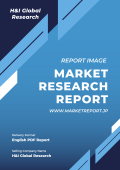目次
第1章. グローバル・インパクト・モディファイア市場レポートの範囲と方法論
1.1. 研究目的
1.2. 研究方法論
1.2.1. 予測モデル
1.2.2. デスク調査
1.2.3. トップダウンとボトムアップアプローチ
1.3. 研究の属性
1.4. 研究の範囲
1.4.1. 市場定義
1.4.2. 市場セグメンテーション
1.5. 研究仮定
1.5.1. 包含と除外
1.5.2. 制限事項
1.5.3. 調査対象期間
第2章 執行要約
2.1. CEO/CXOの視点
2.2. 戦略的洞察
2.3. ESG分析
2.4. 主要な発見
第3章 グローバル・インパクト・モディファイア市場動向分析
3.1. グローバル・インパクト・モディファイア市場を形作る市場要因(2024–2035)
3.2. 推進要因
3.2.1. 建設業界と自動車業界におけるエンジニアリングプラスチックとPVCの需要増加
3.2.2. 新興経済国における急速な工業化とインフラ開発
3.2.3. 耐久性のある軽量材料を必要とする電気自動車の生産急増
3.3. 制約
3.3.1. 原材料価格の変動とサプライチェーンの混乱
3.3.2. 石油由来のポリマーに関する環境問題
3.4. 機会
3.4.1. バイオ由来およびリサイクル可能な衝撃改質剤の普及
3.4.2. ポリマーブレンド配合技術の開発
第4章. グローバルな衝撃改質剤産業分析
4.1. ポーターの5つの力モデル
4.1.1. 購入者の交渉力
4.1.2. 供給者の交渉力
4.1.3. 新規参入の脅威
4.1.4. 代替品の脅威
4.1.5. 競合企業の競争
4.2. ポーターの5つの力予測モデル(2024–2035)
4.3. PESTEL分析
4.3.1. 政治
4.3.2. 経済的
4.3.3. 社会
4.3.4. 技術的
4.3.5. 環境
4.3.6. 法的
4.4. 主要な投資機会
4.5. 主要な成功戦略(2025年)
4.6. 市場シェア分析(2024–2025)
4.7. グローバル価格分析と動向(2025年)
4.8. 分析家の推奨事項と結論
第5章. グローバル・インパクト・モディファイア市場規模と予測(2025–2035年)
5.1. 市場概要
5.2. グローバル衝撃改質剤市場パフォーマンス – 潜在分析(2025年)
5.3. エンジニアリングプラスチック
5.3.1. 主要国別市場規模推計と予測(2024–2035)
5.3.2. 地域別市場規模分析(2025年~2035年)
5.4. PVC
5.4.1. 主要国別市場規模推計と予測(2024~2035年)
5.4.2. 地域別市場規模分析、2025–2035
5.5. ナイロン
5.5.1. 主要国別内訳推計と予測(2024年~2035年)
5.5.2. 地域別市場規模分析、2025–2035
5.6. PBT
5.6.1. 主要国別内訳推計と予測(2024~2035年)
5.6.2. 地域別市場規模分析、2025–2035
5.7. その他
5.7.1. 主要国別内訳推計と予測(2024年~2035年)
5.7.2. 地域別市場規模分析、2025–2035
第6章. グローバル・インパクト・モディファイア市場規模と予測(製品別)、2025–2035
6.1. 市場概要
6.2. グローバル衝撃改質剤市場パフォーマンス – 潜在分析(2025年)
6.3. ABS
6.4. AIM
6.5. CPE
6.6. MBS
6.7. ASA
6.8. EPDM
6.9. その他
第7章. グローバルな衝撃緩和剤市場規模と予測(用途別)2025–2035
7.1. 市場概要
7.2. 建設
7.3. 包装
7.4. 自動車
7.5. 消費財
7.6. その他
第8章 グローバル・インパクト・モディファイア市場規模と地域別予測(2025年~2035年)
8.1. グローバル市場、地域別概要
8.2. 主要なリーダー企業と新興国
8.3. 北米
8.3.1. アメリカ合衆国
8.3.2. カナダ
8.4. ヨーロッパ
8.4.1. イギリス
8.4.2. ドイツ
8.4.3. フランス
8.4.4. スペイン
8.4.5. イタリア
8.4.6. その他のヨーロッパ
8.5. アジア太平洋
8.5.1. 中国
8.5.2. インド
8.5.3. 日本
8.5.4. オーストラリア
8.5.5. 大韓民国
8.5.6. アジア太平洋地域その他
8.6. ラテンアメリカ
8.6.1. ブラジル
8.6.2. メキシコ
8.7. 中東・アフリカ
8.7.1. アラブ首長国連邦
8.7.2. サウジアラビア
8.7.3. 南アフリカ
8.7.4. 中東・アフリカその他の地域
第9章 競合分析
9.1. 主要な市場戦略
9.2. BASF SE
9.2.1. 当社概要
9.2.2. 主要な経営陣
9.2.3. 会社の概要
9.2.4. 財務実績(データ入手状況により異なります)
9.2.5. 製品/サービスポートフォリオ
9.2.6. 最近の動向
9.2.7. 市場戦略
9.2.8. SWOT分析
9.3. ダウ・インク
9.4. LG化学株式会社
9.5. カネカ株式会社
9.6. アルケマ・グループ
9.7. 三井化学株式会社
9.8. アケニズ・チェムソン
9.9. ランセスAG
9.10. フォルモサ・プラスチック・コーポレーション
9.11. 山東瑞豊化学株式会社
9.12. ワッカー・ケミカル AG
9.13. 三菱化学株式会社
9.14. アディヴァント
9.15. エン・ドア
9.16. サンドウ・ポリマーズ株式会社
表の一覧
表1. グローバル・インパクト・モディファイア市場、レポートの範囲
表2. 地域別グローバル市場規模推計と予測(2024年~2035年)
表3. グローバル市場規模推計と予測(用途別)、2024–2035
表4. 製品別グローバル市場規模予測(2024年~2035年)
表5. グローバル市場規模予測(最終用途別)、2024–2035
表6. 米国市場推定値と予測、2024–2035
表7. カナダ市場規模推計と予測、2024–2035
表8. イギリス市場推定値と予測、2024–2035
表9. ドイツ市場推定値と予測、2024–2035
表10. フランス市場の見積もりおよび予測、2024–2035
表11. スペイン市場の見積もりおよび予測、2024–2035
表12. イタリア市場の見積もりおよび予測、2024–2035
表13. 欧州その他の地域市場推定値と予測、2024–2035
表14. 中国市場の見積もりおよび予測、2024–2035
表15. インド市場推定値と予測、2024–2035
表16. 日本市場の見積もりおよび予測、2024–2035
表17. オーストラリア市場の見積もりおよび予測、2024–2035
表18. 韓国市場の見積もりおよび予測、2024–2035
表19. アジア太平洋地域(その他)市場推定値と予測、2024–2035
表20. ブラジル市場の見積もりおよび予測(2024~2035年)
表21. メキシコ市場の見積もりおよび予測、2024–2035
表22. アラブ首長国連邦(UAE)市場推計と予測、2024–2035
表23. サウジアラビア市場の見積もりおよび予測、2024–2035
表24. 南アフリカ市場推定値と予測、2024–2035
表25. MEA地域(その他)市場推定値と予測、2024–2035
図表一覧
図1. グローバル・インパクト・モディファイア市場、研究手法
図2. グローバル衝撃改質剤市場、市場推定手法
図3. グローバル市場規模推定方法と予測手法
図4. グローバル衝撃改質剤市場、2025年の主要動向
図5. グローバル衝撃改質剤市場、成長見通し 2024–2035
図6. グローバル衝撃改質剤市場、ポーターの5つの力モデル
図7. グローバル衝撃改質剤市場、PESTEL分析
図8. グローバル衝撃改質剤市場、バリューチェーン分析
図9. 影響修飾剤市場(用途別)、2025年と2035年
図10. 影響修飾剤市場(製品別)、2025年と2035年
図11. 影響修飾剤市場(最終用途別)、2025年と2035年
図12. 北米市場見通し、2025年と2035年
図13. 欧州市場見通し、2025年および2035年
図14. アジア太平洋市場の見通し、2025年と2035年
図15. ラテンアメリカ市場見通し、2025年と2035年
図16. 中東・アフリカ市場動向、2025年と2035年
図17. 2025年の企業市場シェア分析
Chapter 1. Global Impact Modifiers Market Report Scope & Methodology
1.1. Research Objective
1.2. Research Methodology
1.2.1. Forecast Model
1.2.2. Desk Research
1.2.3. Top Down and Bottom-Up Approach
1.3. Research Attributes
1.4. Scope of the Study
1.4.1. Market Definition
1.4.2. Market Segmentation
1.5. Research Assumption
1.5.1. Inclusion & Exclusion
1.5.2. Limitations
1.5.3. Years Considered for the Study
Chapter 2. Executive Summary
2.1. CEO/CXO Standpoint
2.2. Strategic Insights
2.3. ESG Analysis
2.4. Key Findings
Chapter 3. Global Impact Modifiers Market Forces Analysis
3.1. Market Forces Shaping The Global Impact Modifiers Market (2024–2035)
3.2. Drivers
3.2.1. Increasing demand for engineering plastics and PVC across construction and automotive sectors
3.2.2. Rapid industrialization and infrastructure development in emerging economies
3.2.3. Surge in electric vehicle production requiring durable lightweight materials
3.3. Restraints
3.3.1. Volatility in raw material prices and supply chain disruptions
3.3.2. Environmental concerns regarding petroleum-based polymers
3.4. Opportunities
3.4.1. Rise of bio-based and recyclable impact modifiers
3.4.2. Technological advancements in polymer blend formulations
Chapter 4. Global Impact Modifiers Industry Analysis
4.1. Porter’s 5 Forces Model
4.1.1. Bargaining Power of Buyer
4.1.2. Bargaining Power of Supplier
4.1.3. Threat of New Entrants
4.1.4. Threat of Substitutes
4.1.5. Competitive Rivalry
4.2. Porter’s 5 Force Forecast Model (2024–2035)
4.3. PESTEL Analysis
4.3.1. Political
4.3.2. Economical
4.3.3. Social
4.3.4. Technological
4.3.5. Environmental
4.3.6. Legal
4.4. Top Investment Opportunities
4.5. Top Winning Strategies (2025)
4.6. Market Share Analysis (2024–2025)
4.7. Global Pricing Analysis and Trends 2025
4.8. Analyst Recommendation & Conclusion
Chapter 5. Global Impact Modifiers Market Size & Forecasts by Application 2025–2035
5.1. Market Overview
5.2. Global Impact Modifiers Market Performance - Potential Analysis (2025)
5.3. Engineering Plastics
5.3.1. Top Countries Breakdown Estimates & Forecasts, 2024–2035
5.3.2. Market Size Analysis, by Region, 2025–2035
5.4. PVC
5.4.1. Top Countries Breakdown Estimates & Forecasts, 2024–2035
5.4.2. Market Size Analysis, by Region, 2025–2035
5.5. Nylon
5.5.1. Top Countries Breakdown Estimates & Forecasts, 2024–2035
5.5.2. Market Size Analysis, by Region, 2025–2035
5.6. PBT
5.6.1. Top Countries Breakdown Estimates & Forecasts, 2024–2035
5.6.2. Market Size Analysis, by Region, 2025–2035
5.7. Others
5.7.1. Top Countries Breakdown Estimates & Forecasts, 2024–2035
5.7.2. Market Size Analysis, by Region, 2025–2035
Chapter 6. Global Impact Modifiers Market Size & Forecasts by Product 2025–2035
6.1. Market Overview
6.2. Global Impact Modifiers Market Performance - Potential Analysis (2025)
6.3. ABS
6.4. AIM
6.5. CPE
6.6. MBS
6.7. ASA
6.8. EPDM
6.9. Others
Chapter 7. Global Impact Modifiers Market Size & Forecasts by End-Use 2025–2035
7.1. Market Overview
7.2. Construction
7.3. Packaging
7.4. Automotive
7.5. Consumer Goods
7.6. Others
Chapter 8. Global Impact Modifiers Market Size & Forecasts by Region 2025–2035
8.1. Global Market, Regional Snapshot
8.2. Top Leading & Emerging Countries
8.3. North America
8.3.1. U.S.
8.3.2. Canada
8.4. Europe
8.4.1. UK
8.4.2. Germany
8.4.3. France
8.4.4. Spain
8.4.5. Italy
8.4.6. Rest of Europe
8.5. Asia Pacific
8.5.1. China
8.5.2. India
8.5.3. Japan
8.5.4. Australia
8.5.5. South Korea
8.5.6. Rest of Asia Pacific
8.6. Latin America
8.6.1. Brazil
8.6.2. Mexico
8.7. Middle East & Africa
8.7.1. UAE
8.7.2. Saudi Arabia
8.7.3. South Africa
8.7.4. Rest of Middle East & Africa
Chapter 9. Competitive Intelligence
9.1. Top Market Strategies
9.2. BASF SE
9.2.1. Company Overview
9.2.2. Key Executives
9.2.3. Company Snapshot
9.2.4. Financial Performance (Subject to Data Availability)
9.2.5. Product/Services Port
9.2.6. Recent Development
9.2.7. Market Strategies
9.2.8. SWOT Analysis
9.3. Dow Inc.
9.4. LG Chem Ltd.
9.5. Kaneka Corporation
9.6. Arkema Group
9.7. Mitsui Chemicals Inc.
9.8. Akdeniz Chemson
9.9. Lanxess AG
9.10. Formosa Plastics Corporation
9.11. Shandong Ruifeng Chemical Co., Ltd.
9.12. Wacker Chemie AG
9.13. Mitsubishi Chemical Corporation
9.14. Addivant
9.15. En-Door
9.16. Sundow Polymers Co., Ltd.
*** 免責事項 ***
https://www.globalresearch.co.jp/disclaimer/











